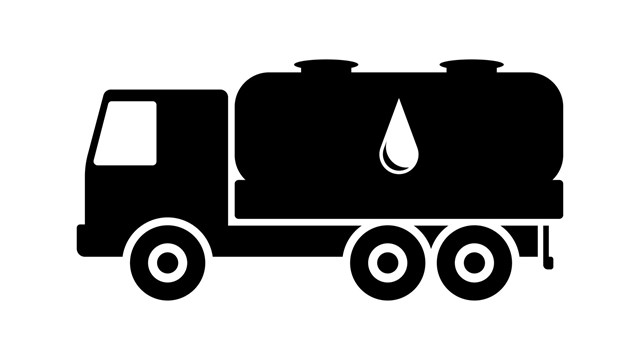
It seems as if many of us have been here before. In the late 1970s and early ‘80s, fuel prices escalated faster than any professional forecasters in the field thought were imaginable, with heating oil soaring faster than gas, electricity, or steam. Owners and managers of buildings snapped into action by demanding a reduction in prices, while others made prescriptive improvements in their buildings that were highly influenced by product salespeople. New windows, new boiler, switch fuels. Not many saw a reduction in bills from these misdirected improvements designed to save energy. Prices stabilized, and the problems seemed to go away.
Considering inflated dollars, all fuels (despite the recent price jumps), are cheaper today than they were in 1980; the recent price spikes, particularly oil and electricity, have raised the hackles, yet not the awareness, of most cooperatives on measured, long-range approaches to fuel usage, cost, and analysis. This is not a "snap your fingers and solve the problem" strategy, but rather, a multi-step approach to managing your energy budget.
Your building fuel and electricity usage are typically monitored by cost, not by consumption. In the case of oil, those that have shopped around for years have always gotten low prices, and energy budgets reflect this. More important, however, is to examine your heating/hot water fuel usage and your electricity usage by consumption per square foot. In the case of heating and cooling fuel usage, the severity of weather should be factored into the equation. In all cases, a building needs to track historical usage and what that usage means to your overall building budget.
Know How Much You Use
The assumption in this article reflects the most common form of heating and hot water generation in New York City, where a central boiler, either steam or hot water, provides both heat and hot water. Those with a separate hot water system can look at this fuel analysis method and still break out hot water versus heating usage. Most managing agents can tell you about annual dollars or overall consumption in your building; some that are very aware look at overall usage per apartment or per room. Most do not track how much fuel is used to make hot water in the summer or heat and hot water in the winter. There are some simple methods for doing this that will be described below, but first one needs to understand fuel usage between deliveries.
If you heat your building with gas and your meter is actually read, not estimated, you know what your consumption is between dates on a monthly basis. If you heat with oil, it is essential that each delivery fills your oil tank, so that you know the displaced usage between deliveries. The best way to find out how well your fuel usage is monitored is to ask your managing agent to provide you with the last year of fuel usage information, to see the level of sophistication.
Do the Math
There are numerous software programs available for fuel analysis, and simple spreadsheet programs that could be created in-house. If you look at consumption on a regular basis over the year, you will, of course, note that the highest is in winter, the lowest, in the summer. Scanning the data for usage in the summer, one can ascertain an average daily fuel usage for making domestic hot water (DHW). [Let us say that it is 100 gallons] If we multiply that number by 365 days, we get the estimated annual fuel usage for making DHW. [In this case, it is 36,500 gallons.) Now look at your total annual heating/DHW fuel consumption, and subtract the DHW usage from the total to get fuel usage for heat. [Assume that total annual consumption is 73,000 gallons. Thus, consumption for space heating is also 36,500 gallons.] In the average New York City building that we have looked at, the heating and hot water fuel usage is virtually equal [as in this example] but the ratio ranges all over the map.
The next step is to take your space heating usage [here, 36,500 gallons] and divide it by the number of heated square feet in the building. [Let us assume that the sample building measures 40 ft x 100 ft (4,000 sq. ft. per floor) and is 5 stories high. Then its heated square footage is 4,000 x 5 = 20,000 sq. ft.] Then, divide by the number of heating degree-days (HDD) over the last winter. (During an average winter, New York City has about 4,850 HDD.) [Assuming an average winter, the sample building has consumed 36,500 gal/20,000 sq. ft./4850 degree - days = 0.000376 gal/sq. ft./HDD.]
HDDs measure the severity of winter by noting the temperature variation from 65 degrees Fahrenheit. Average daily temperatures lower than this are counted as heating degree days; warmer than that are cooling degree days. If the average temperature during a heating season day is 40, subtracting it from 65 results in 25 HDDs. One does not have to do the calculation. The numbers are in the weather section of the daily newspapers.
Finally, to differentiate between different fuel types that have more heating capacity (as measured in British Thermal Units, or BTUs), one must multiply the last number by the number of BTUs in a unit of the fuel used in your building. (Gas has 100,000 BTUs per therm, Nos.2, 4, and 6 oil have respectively 135,000, 145,000, and 155,000 BTUs per gallon). [In the sample, multiplying 0.000376 by these numbers would result in approximately 51, 55, and 58.This gives us a uniform number to analyze buildings of different sizes and with varying weather types in BTUs per square foot per heating degree-day (BTU/sq. ft./HDD).
All that math sounds mind-numbing, but is gives us a uniform number to analyze buildings of different sizes and with varying weather types: BTUs per square foot per heating degree-day (BTUs/sq.ft./HDD).
The Real Numbers
Looking at over 400 New York City buildings from the mid 1990s, a recent study noted the average building used 22 BTU/sq.ft./HDD, with a range as low as seven and as high as 70. This echoes studies from the ‘80s showing a vast range between the wasters and the more efficient users. Note that the national average for residential units is around 15, reflecting mainly single-family houses that turn their heat significantly back in the evening and typically do not overheat to the level that most New York City buildings do. Unfortunately, the lack or improper calibration of heating controls causes vast overheating in buildings, which in turn makes residents open windows rather than turn off radiators to control heat; this of course is another reason for excessive fuel usage in New York City buildings.
Despite these high numbers for heating, sometimes hot water usage is even higher, caused by two forms of waste: showerheads and sink aerators that have not been reduced to lower flow rates, and dangerously overheated hot water. The former of these should be handled by an organized program to replace showerheads and aerators through your building; the latter is typically a change in the way DHW is generated, mixed, or stored, and needs a bit of engineering assistance. Also note that if you are metered for water, more efficient use of water through low-flow showerheads and aerators will reduce your water and sewer bills as well.
The lesson here is simple. Many salespeople will attempt to sell you on a particular item or service under the guise of energy savings, and will promise you savings ranging from ten to 50 percent. Very few of them, however, know what typical usage is in buildings, or what your specific usage patterns are. In many buildings that generate DHW inefficiently and have the resulting high usage, changing to low flow devices and monitoring water temperatures will cost significantly less and save significantly more than a full boiler replacement. If a similar building has both high DHW and heating usage, coupled with a 60-plus year-old boiler, replacement of the boiler with new controls will probably be very cost effective.
Apartment buildings are long-term investments and need intelligent strategies for monitoring and reducing fuel usage and bills. A measured approach to finding the highest usage and reducing it to increase cash flow, coupled with well-timed capital improvements, will increase the safety, comfort, durability, and efficiency of your building while saving you money.
F.L. Andrew Padian, Senior Housing Specialist for Steven Winter Associates (www.swinter.com), has been working with NYC multiple dwellings for almost 20 years and has extensive experience in reducing fuel usage in these buildings.






Leave a Comment